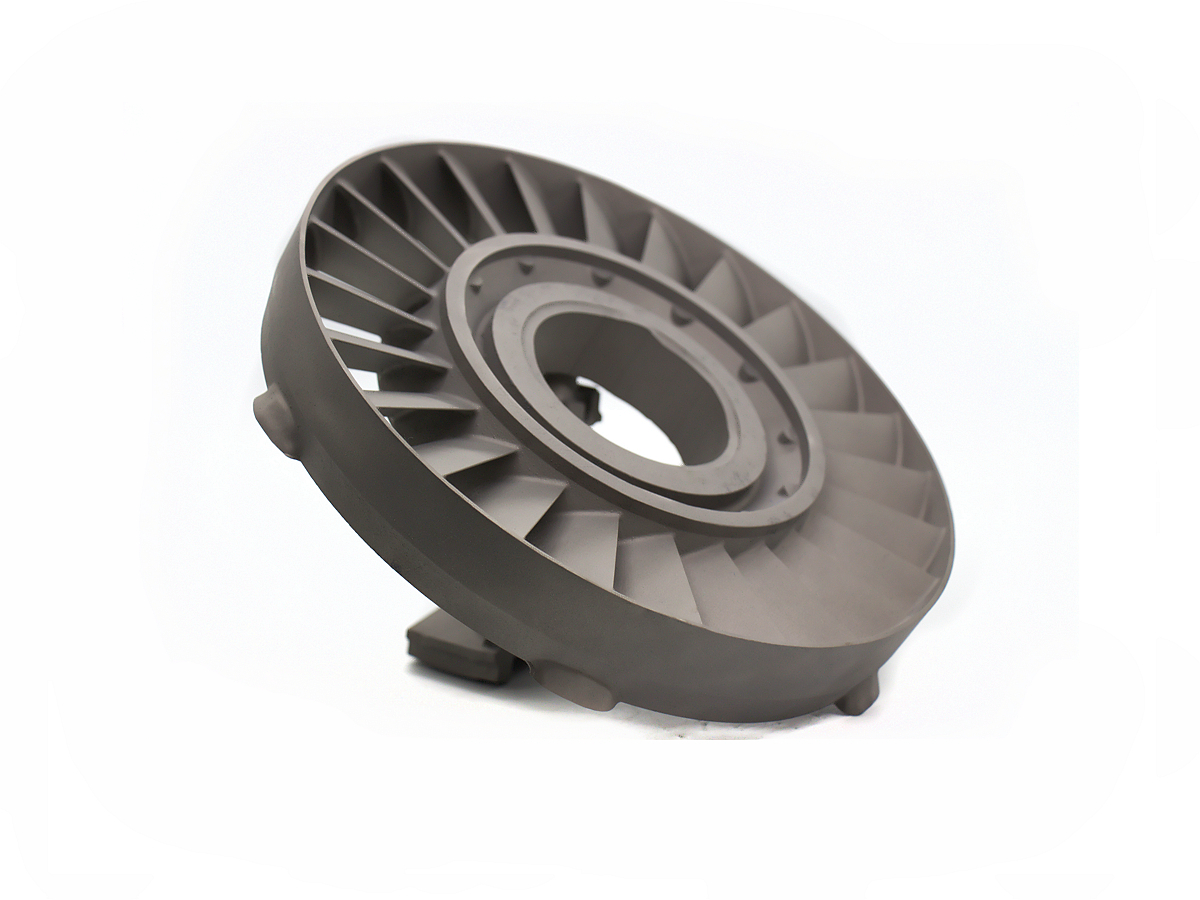Precision CNC Machining for Reactor Core Components in Nuclear Power Plants
Introduction to CNC Machining for Reactor Core Components
Reactor core components are among the most critical parts in nuclear power plants, directly influencing reactor safety, efficiency, and longevity. Precision CNC machining, with tolerances up to ±0.002 mm, plays an essential role in manufacturing high-performance core parts such as fuel assemblies, control rods, neutron reflectors, and structural internals. These components must withstand severe radiation exposure, high temperatures (up to 900°C), and corrosive coolant environments. Advanced CNC machining processes are therefore indispensable to the nuclear, power generation, and industrial equipment industries.
Utilizing state-of-the-art CNC machining technology ensures compliance with stringent industry standards, significantly improving reactor core safety, reliability, and operational efficiency.
Material Comparison for Reactor Core Components
Material Performance Comparison
Material | Tensile Strength (MPa) | Radiation Resistance | Corrosion Resistance | Typical Applications | Advantage |
|---|---|---|---|---|---|
550-700 | Exceptional | Outstanding | Fuel cladding, structural internals | High neutron transparency, excellent corrosion resistance | |
1240-1450 | Excellent | Exceptional | Reactor internals, control rod mechanisms | Superior strength at high temperature | |
505-720 | Good | Excellent | Core supports, grid spacers | High durability, good corrosion resistance | |
790-900 | Excellent | Exceptional | Chemical control systems, coolant parts | Superior chemical and corrosion resistance |
Material Selection Strategy for Reactor Core Components
Material selection for reactor core components requires careful evaluation of radiation stability, thermal properties, corrosion resistance, and mechanical integrity:
Zirconium Alloys are chosen for fuel cladding and structural internals due to their exceptional neutron transparency and corrosion resistance, crucial for efficient neutron management and component durability.
Components such as control rod mechanisms and internal reactor parts exposed to intense radiation and high-temperature environments (up to 700°C) benefit significantly from Inconel 718, providing exceptional high-temperature strength and structural stability.
Structural elements like core supports and grid spacers often utilize Stainless Steel SUS304, offering robust mechanical performance, excellent corrosion resistance, and long-term reliability.
Chemical control systems and reactor coolant components exposed to aggressive environments benefit from Hastelloy C-276, known for its outstanding corrosion and chemical resistance, ensuring operational safety and reliability.
CNC Machining Process Analysis for Reactor Core Components
CNC Machining Processes Performance Comparison
CNC Machining Technology | Dimensional Accuracy (mm) | Surface Roughness (Ra μm) | Typical Applications | Key Advantages |
|---|---|---|---|---|
±0.002-0.008 | 0.2-0.6 | Complex structural internals, neutron reflectors | High precision, complex geometries | |
±0.005-0.01 | 0.4-1.0 | Fuel rods, cylindrical core components | High accuracy, efficient fabrication | |
±0.002-0.005 | 0.1-0.4 | Control rod mechanisms, precision assemblies | Precise machining without mechanical stress | |
±0.002-0.004 | 0.05-0.2 | Sealing surfaces, precision mating areas | Ultra-high accuracy, exceptional finishes |
CNC Machining Process Selection Strategy for Reactor Core Components
Selecting appropriate CNC machining methods for reactor core components is critical, involving precise evaluation of component complexity, required accuracy, surface finish standards, and operational demands:
Complex structural internals and neutron reflector components requiring extremely tight tolerances (±0.002-0.008 mm) and intricate shapes significantly benefit from Multi-Axis CNC Milling, achieving superior accuracy and complexity.
Fuel rods and cylindrical reactor core elements needing consistent dimensional accuracy (±0.005-0.01 mm) efficiently employ CNC Turning, providing reliable dimensional control and rapid production.
Control rod mechanisms, neutron absorber assemblies, and internal precision parts with intricate internal features and tight tolerances (±0.002-0.005 mm) utilize EDM machining, ensuring precise manufacturing without introducing residual stresses.
Critical sealing surfaces, mating areas, and precision interfaces demanding exceptional surface finish (Ra ≤0.2 μm) and accuracy (±0.002-0.004 mm) rely on CNC Grinding, significantly enhancing component reliability and performance.
Surface Treatment Solutions for Reactor Core Components
Surface Treatment Performance Comparison
Treatment Method | Radiation Stability | Corrosion Resistance | Max Operating Temp (°C) | Typical Applications | Key Features |
|---|---|---|---|---|---|
Excellent | Excellent (~1200 hrs ASTM B117) | 350 | Core structural components | Reduces contamination, enhances corrosion resistance | |
Good | Excellent (~1000 hrs ASTM B117) | 300 | Stainless steel core supports | Improved corrosion protection, cleanliness | |
Excellent | Outstanding (~1500 hrs ASTM B117) | 1200 | High-temperature core elements | Superior thermal insulation and oxidation resistance | |
Excellent | Outstanding (~1500 hrs ASTM B117) | 500 | Control rod mechanisms, precision assemblies | Superior wear resistance, durability |
Surface Treatment Selection Strategy for Reactor Core Components
Choosing surface treatments for reactor core components significantly enhances corrosion resistance, radiation tolerance, and operational longevity:
Electropolishing is crucial for core structural components, achieving smooth, contamination-resistant surfaces that significantly reduce operational risks and enhance corrosion resistance.
Passivation provides critical protection for stainless steel core supports and other structural parts, significantly improving corrosion resistance and maintaining component cleanliness.
High-temperature components operating near the reactor core significantly benefit from Thermal Barrier Coatings (TBC), providing exceptional thermal insulation, oxidation resistance, and extended component life at elevated temperatures (up to 1200°C).
Precision control rod assemblies and moving internal parts leverage PVD coatings for superior wear resistance, durability, and reliable operation under extreme conditions.
Quality Control Standards for CNC Machined Reactor Core Components
Quality Control Procedures
Dimensional inspections using advanced Coordinate Measuring Machines (CMM).
Surface roughness and integrity verification via precision profilometers.
Radiation stability and corrosion resistance testing under simulated reactor conditions.
Mechanical testing (tensile strength, hardness, fracture toughness) according to ASTM and ASME standards.
Non-destructive testing (ultrasonic, radiographic, eddy-current) ensuring defect-free parts.
Complete documentation and traceability aligned with ISO 9001, ASME NQA-1, and nuclear regulatory standards.
Industry Applications of CNC Machined Reactor Core Components
Typical Applications
Fuel assemblies and neutron reflectors.
Control rod drive mechanisms and neutron absorbers.
Structural internals and reactor vessel components.
Precision coolant channel components.
Related FAQs:
Why is CNC machining critical for reactor core components?
What materials offer optimal performance in reactor cores?
Which CNC processes ensure precision for reactor core components?
How do surface treatments improve reactor core component reliability?
What quality standards apply to CNC machined reactor core parts?

